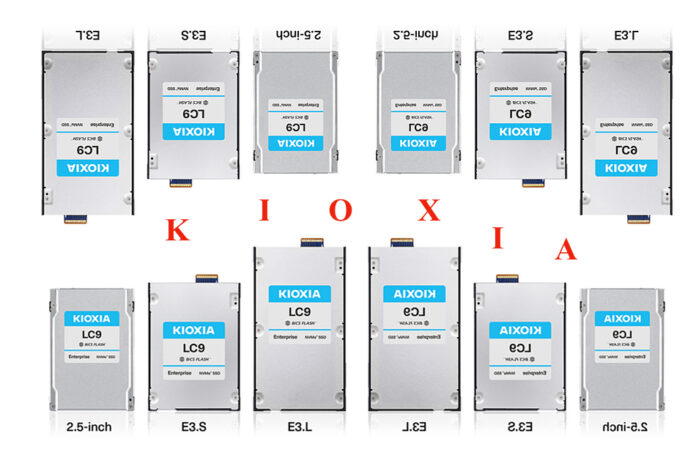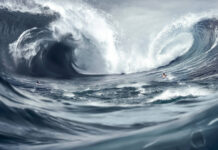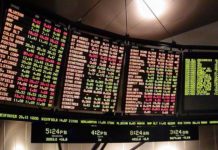Online storage capacity constraints are melting away with Kioxia announcing the largest capacity SSD at 245.76 TB, opening the door to a 200-plus petabyte rack and a five-rack exabyte configuration.
It complements the already announced 122.88 TB model and is intended for use in data lakes – where massive data ingestion and rapid processing are required – and generative AI, which requires storing large datasets for training large language models (LLMs), as well as the embeddings and vector databases that support inference via retrieval-augmented generation (RAG).
These drives are aimed at very large organizations and hyperscalers that need this level of capacity muscle.
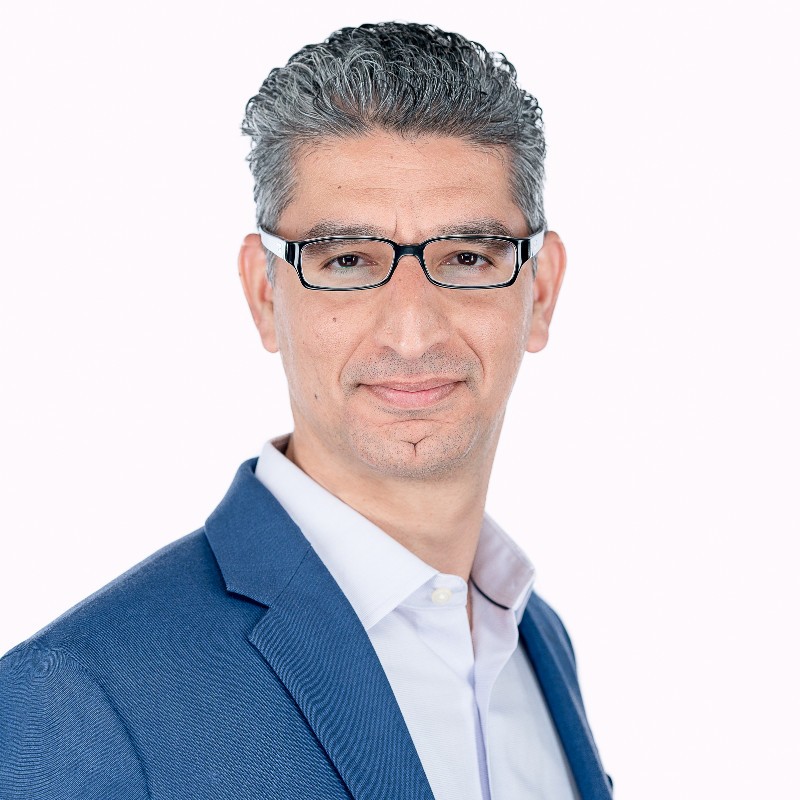
Neville Ichhaporia, SVP and GM of the SSD business unit at Kioxia America, said the LC9 series sets “a new benchmark for capacity and innovation in the SSD space. As generative AI reshapes datacenter architecture, we’re delivering the kind of breakthrough technology that enables our customers to optimize their IT infrastructure investments – pushing boundaries in performance, efficiency, and scale.”
Kioxia now has twice as much drive capacity as competitors Phison (122.88 TB) and Solidigm (122 TB), which announced their drives in November last year. Since Sandisk is a NAND fab joint-venture partner of Kioxia, it could also produce a similar-sized SSD to the LC9.
The LC9 drives use Kioxia’s BiCS8 218-layer 3D NAND organized in QLC (4bits/cell) format with 2 Tb dies. These 32 dies are stacked to produce 8 TB of capacity in a compact 154-ball BGA (Ball Grid Array) package. Kioxia says this is an industry-first.
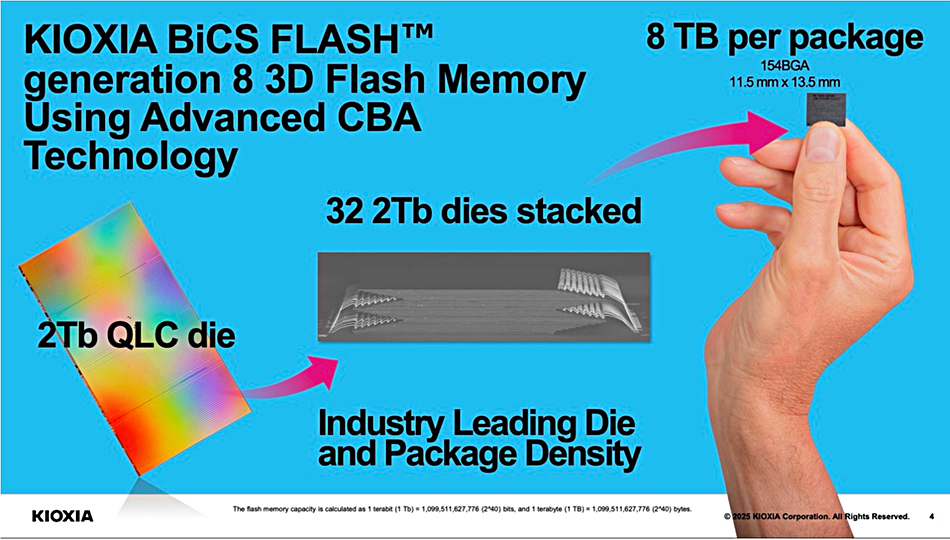
We imagine that Phison might find scope for parallelism with around 30 of these BGAs needed for a 245.76 TB drive, were it to be minded and able to buy the component chips and produce one.
A Kioxia slide provides LC9 speeds-and-feeds information:
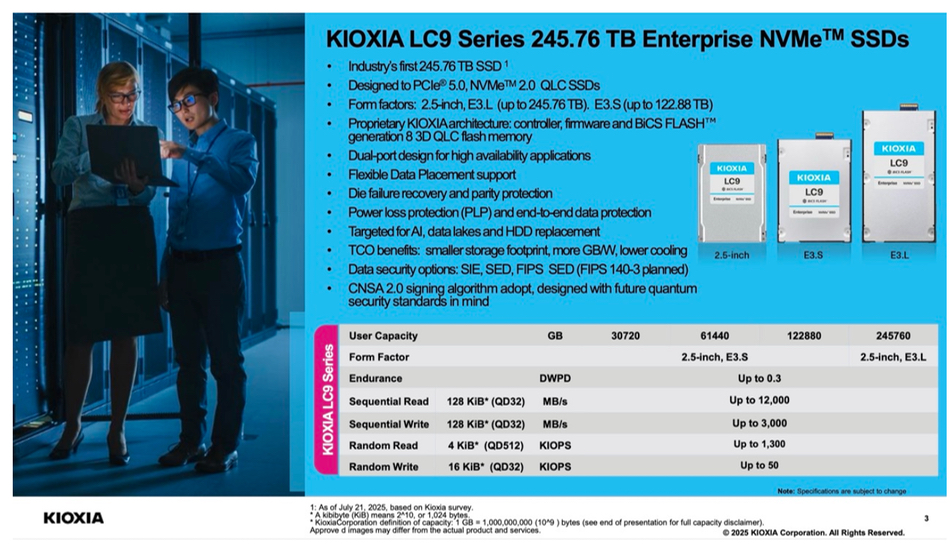
The drives are available in U.2 (2.5-inch), E1.S, and E1.L formats, though maximum capacity is limited to 122.88 TB in the 2.5-inch and E1.S variants.
These SSDs have a PCIe 5×4 interface, or PCIe 5×2 in a dual-port config, along with NVMe. Performance is heavily skewed to reads, with an up to 12 GBps bandwidth versus just 3 GBps for writes. This is not that fast for PCIe Gen 5 SSDs. Kioxia’s own CD9P drive offers up to 14.8 GBps reads and 7 GBps writes but it does use faster TLC NAND.
Phison’s 128 TB Pascari D205V uses QLC NAND, like the LC9, and is faster, delivering up to 14.6 GBps read bandwidth and 3.2 GBps write speeds. The SK hynix PS1012 drive is also a QLC SSD and is slightly faster as well. It pumps out 13 GBps read bandwidth at the 61 TB capacity level. A 122 TB version is due later this year.
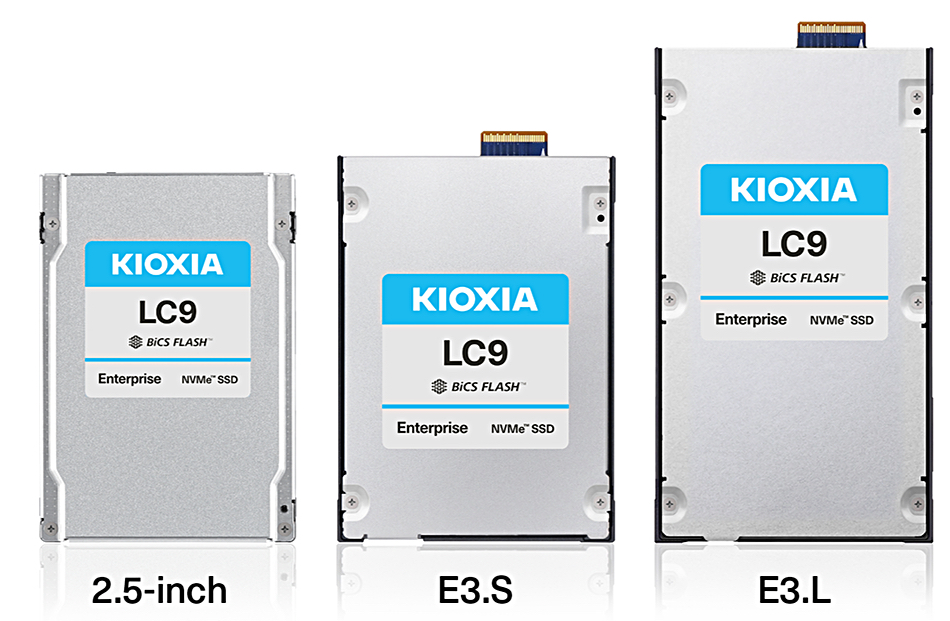
The LC9 has Flexible Data placement support to improve endurance, at 0.3 drive writes per day, and performance. It also has various security features, such as self-encryption, and meets the Open Compute Project (OCP) Datacenter NVMe SSD v2.5 specification, but not all requirements.
We envisage other SSD suppliers announcing their own similarly capacious SSDs and pitching them at the same market soon enough. It’s noteworthy that Pure Storage is introducing 300 TB versions of its proprietary NAND drive, the Direct Flash Module (DFM), and Meta has licensed DFM IP. Both Micron and Kioxia are NAND chip suppliers to Pure.
The pace of SSD capacity expansion is rapid, far outpacing disk drive capacity growth, which is currently in the 32-36 TB area with 40 TB drives forecast. There is no pricing information available for the LC9 so we can’t make a $/TB comparison with HDDs. A rack full of LC9s could potentially significantly outperform disk drives in TCO terms because of the reduced floor and rack space, cooling, and most likely the power they need.
Kioxia’s coming BiCS 10 generation of NAND will feature 332 layers, 52 percent more than BiCS 9. That would enable, in theory, a 3 Tb QLC die and, by extrapolation, a 368 TB SSD. This would have seemed crazy three or four years ago. Such is the way our expectations of what’s normal in the NAND world have changed.
Kioxia LC9 Series SSDs are now sampling with select customers and will be featured at the Future of Memory and Storage 2025 conference, taking place August 5-7 in Santa Clara.


